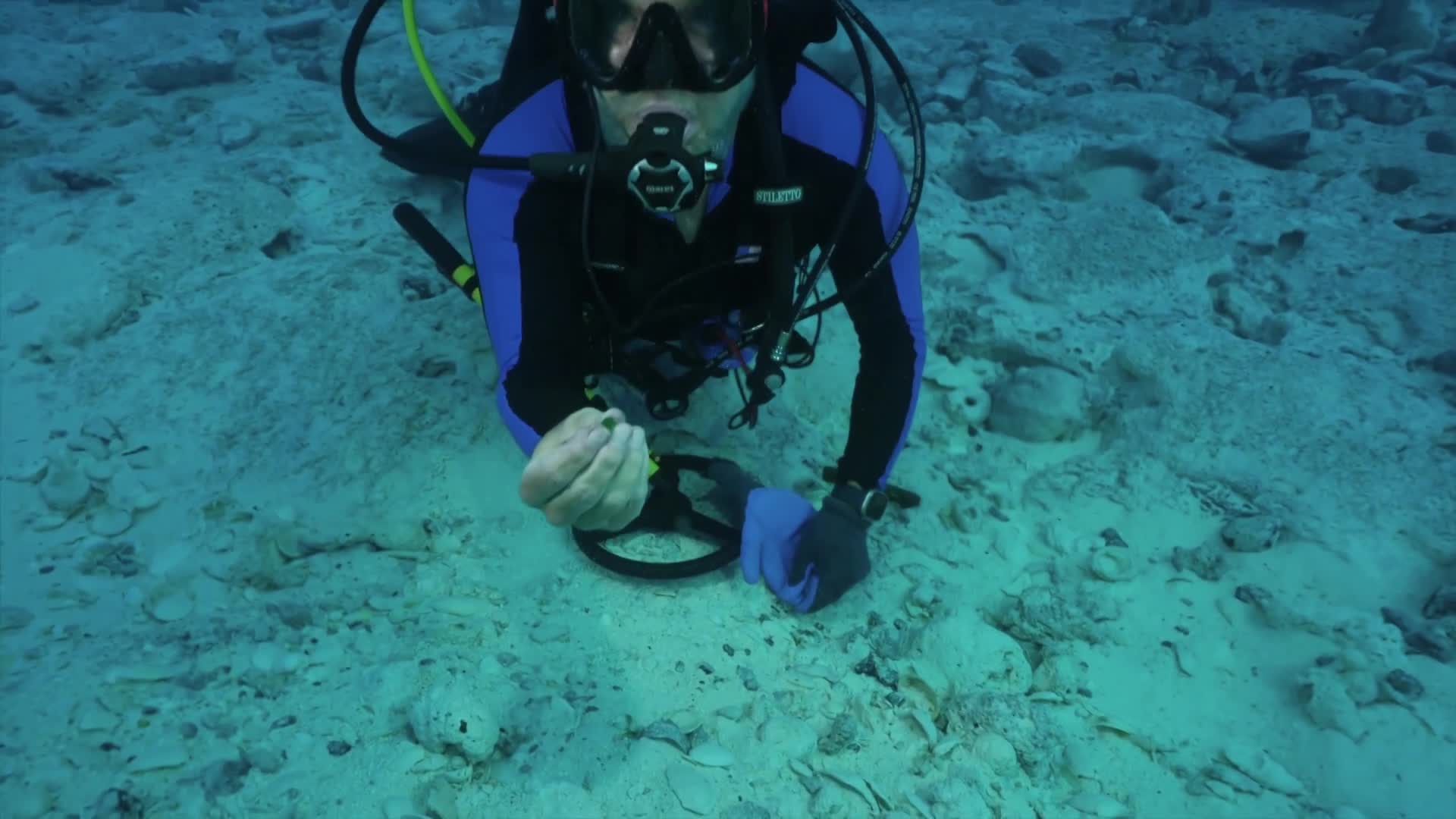HENRICO COUNTY, Va. — A piece of coal from the Titanic sits in Jim Sinclair's home office — a modest memento representing an extraordinary journey to a place few humans will ever see.
"I love the whole idea of holding history in the palm of my hand," Sinclair said. "I'm very happy to still have this. This is a piece of coal that came from the wreck of the RMS Titanic that went down in 1912."
The 68-year-old is one of fewer than 100 people to visit the Titanic site, which lies 2 1/2 miles below the surface of the Atlantic Ocean.
"I think outside of Noah's Ark this is probably the most well-known ship in the world," he said.
Riding in a Russian MIR submarine in 2000, Sinclair became the first archaeologist ever to reach the wreck.
"I was down there for say 10 hours. It was peaceful going down there," Sinclair said. "It is like being next to a huge wall of rust."
The New Jersey native mapped the debris field around the Titanic's stern while helping the team recover artifacts from the deteriorating ship.
Twenty-five years later, the married father says he still can't help but think of the souls lost in the tragedy.
"I saw people's garment bags with little leather satchel," he said. "And shoes! There were shoes everywhere."
The Titanic is just one of nearly 40 wrecks the professional diver has explored throughout his career.
"As far as I am concerned as an underwater archaeologist, I have been blessed with an embarrassment of riches if you will," he said.
In the mid-1980s, Sinclair was part of a team that discovered the Nuestra Señora de Atocha, a Spanish galleon that sank off the Florida Keys in 1622 while heading back to Spain.
"I can't think of another shipwreck that has been found that had that much treasure on it," Sinclair said. "We ended up with 37 intact, treasure chests off the ship. With single silver coins, it came to somewhere near 180,000 silver coins."
The ship's cargo was valued at $500 million.
"I think I finally know how Howard Carter felt when he shined the light into King Tut's tomb for the first time and they asked him what he saw and he said, 'Gold, gold everywhere the glint of gold,'" he said.
Sinclair's underwater adventures have been featured on national television. He and his trusted team of fellow divers have hunted dozens of other wrecks from Guam to the Gulf of Mexico.
Some of their discoveries land in private collections, but most make it to museums.
"I would like to tell you that you get used to it, but you never do," he said.
Sinclair estimates that there are at least 3 million shipwrecks around the world.
"It is still an untamed element. To me there is still so much unknown out there," he said. "We've only mapped a very insignificant part of the bottom of the ocean."
He feels just as comfortable underwater as he does on dry land.
"I don't know how to quantify it, but it's been my home for a long time," Sinclair said.
The treasure hunter and maritime archaeologist continues pushing his career to new depths.
"I'm still drawn to it. I look forward to going to it whether I'm on vacation or whether I'm going to work because every time I dive into the water, I don't know what's going to be found. I don't know what I'm going to see," Sinclair said. "It is a very, very special place to me."
CBS 6 is committed to sharing community voices on this important topic. Email your thoughts to the CBS 6 Newsroom.
📲: CONNECT WITH US
Blue Sky | Facebook | Instagram | X | Threads | TikTok | YouTube
This story was initially reported by a journalist and has been converted to this platform with the assistance of AI. Our editorial team verifies all reporting on all platforms for fairness and accuracy. To learn more about how we use AI in our newsroom, click here.






